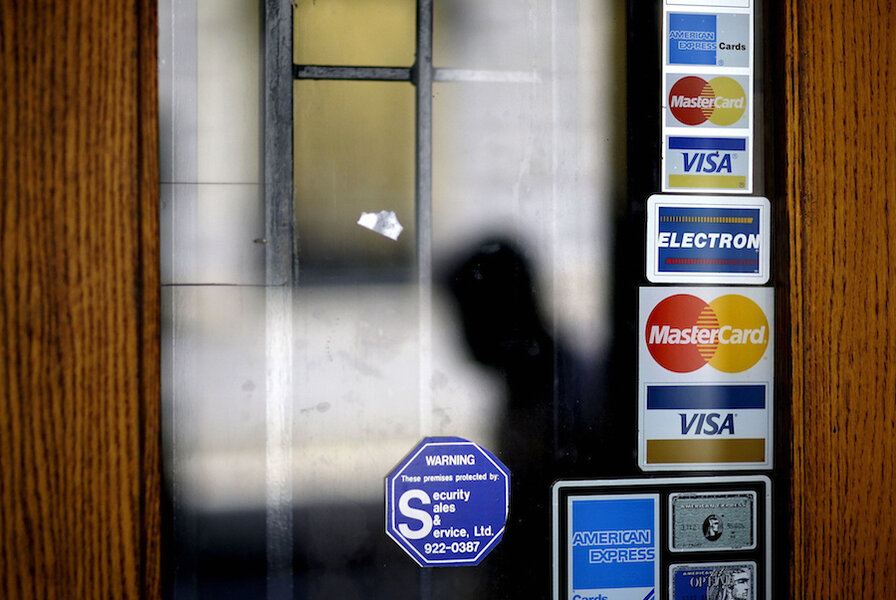How to borrow your way out of debt
Loading...
Many people who take out loans to pay off credit cards and other obligations wind up worse off, with more debt and more stress than before they applied. Some people, though, successfully use debt consolidation loans to turn a bad financial situation around.
Emilie Burke of Raeford, North Carolina, is doing just that. Burke, a recent college graduate, used a $6,000 personal loan from online lender Upstart to pay off some of the $13,600 credit card debt she incurred as a student.
Since receiving the loan in November, Burke says she’s paid down the balance to $4,500 and reduced her remaining credit card debt to $2,500. Burke, who works as a data specialist, also used balance transfer offers with a 0% annual rate to lower her credit card interest rates and speed up her debt payoff.
Burke crafted a budget with the help of a financial planner at LearnVest, an online advice site, and dedicated her earnings from a weekend job waitressing to paying down the debt. She also stopped carrying credit cards.
“I figured I couldn’t go back into debt if I didn’t have my cards,” says Burke, who blogs about her journey out of debt at BurkeDoes.com.
That kind of determination is essential if people want to avoid winding up deeper in the hole. Otherwise, the overspending that led to the credit card debt just continues unabated.
Consolidation: ladder or treadmill?
“People will use a consolidation loan to pay off their credit card debt, and within a year they’ve run up their balances again,” said Bruce McClary, a spokesman for the National Foundation for Credit Counseling, who has worked as a debt collector, loan representative and credit counselor. “They’ve essentially doubled the amount of debt they had in the first place, and now they’re tapped out.”
One study of 189 Indiana residents who used debt consolidation loans found that 37.5% incurred another debt within three months and that 87.5% incurred more debt within a year. Only one-quarter said they felt less financial stress after taking out the loan, while another quarter reported feeling more stress, according to the study published by the Association for Financial Counseling and Planning Education.
In addition, people who took out debt consolidation loans were no less likely to file bankruptcy than people who didn’t, according to a research project that used the Panel Study of Income Dynamics, a long-running survey of Americans’ finances.
The other risks of debt consolidation depend on the type of loan used. Rates on unsecured personal loans, for example, may be lower than prevailing credit card rates — or substantially higher. Rates range from about 3% all the way up to 36%, depending on the lender and the borrower’s credit scores and debt-to-income ratio. Burke said her good credit resulted in a 7% rate on her loan, but her high debt levels relative to her income limited the amount she could borrow.
Another common way to consolidate debt is a secured loan, one that uses a home or car as collateral. These secured loans typically have lower interest rates, but borrowers are putting their home or car at risk, since missed payments can result in foreclosure or repossession.
Borrowing from a 401(k) or other retirement account also can be dangerous, since any balance could be taxed and penalized as a withdrawal if the borrower loses a job and can’t quickly repay the loan.
5 steps to doing debt consolidation right
Here’s a checklist to use if you’re considering a debt consolidation loan:
- Objectively assess your situation. If your credit card balances, medical bills and other consumer debts equal half or more of your income, consider consulting both a bankruptcy attorney and a credit counselor. You’re unlikely to be able to pay off your debt within five years, which is typically the longest period you’d be forced to do so under a Chapter 13 bankruptcy repayment plan. Most people with unmanageable debt can qualify for a fasterChapter 7 filing, which erases consumer debt within three to four months.
- Avoid high-cost loans. Calculate the total cost of the loan — the monthly payment times the number of payments, plus any fees — and compare it with what you’re paying now. Some lenders offer low payments but sky-high interest rates and long terms that keep people in debt longer. Credit unions often offer the best rates and terms on personal loans, but check online lenders as well.
- Opt for the shortest possible loan. To minimize the interest you’ll pay, keep loan terms to three years or less if possible. Five years is the maximum you should consider, for the reasons noted above.
- Look for direct payment of creditors. Some lenders will pay your credit card company directly, removing the temptation to use borrowed funds for another purpose.
- Consider closing your cards. Closing credit card accounts can hurt your credit scores, but so can ongoing struggles with debt. If you don’t trust yourself not to run up more debt, shuttering accounts may help you learn to live within your means. People who closed accounts were more likely to pay off their debts, regardless of the dollar amount, than those who left them open, according to a study by researchers from the Kellogg School of Management at Northwestern University.
Burke closed some of her cards but plans to keep a few open, if not readily available. She stores them in a desk drawer far from her computer screen.
“I have to go upstairs and dig them out of the bottom of a container in a drawer, and most of the time I’m too lazy to do that,” she says.
Liz Weston is a certified financial planner and columnist at NerdWallet, a personal finance website, and author of “Your Credit Score.” Email: lweston@nerdwallet.com. Twitter: @lizweston.
This article was written by NerdWallet and was originally published by The Associated Press.







